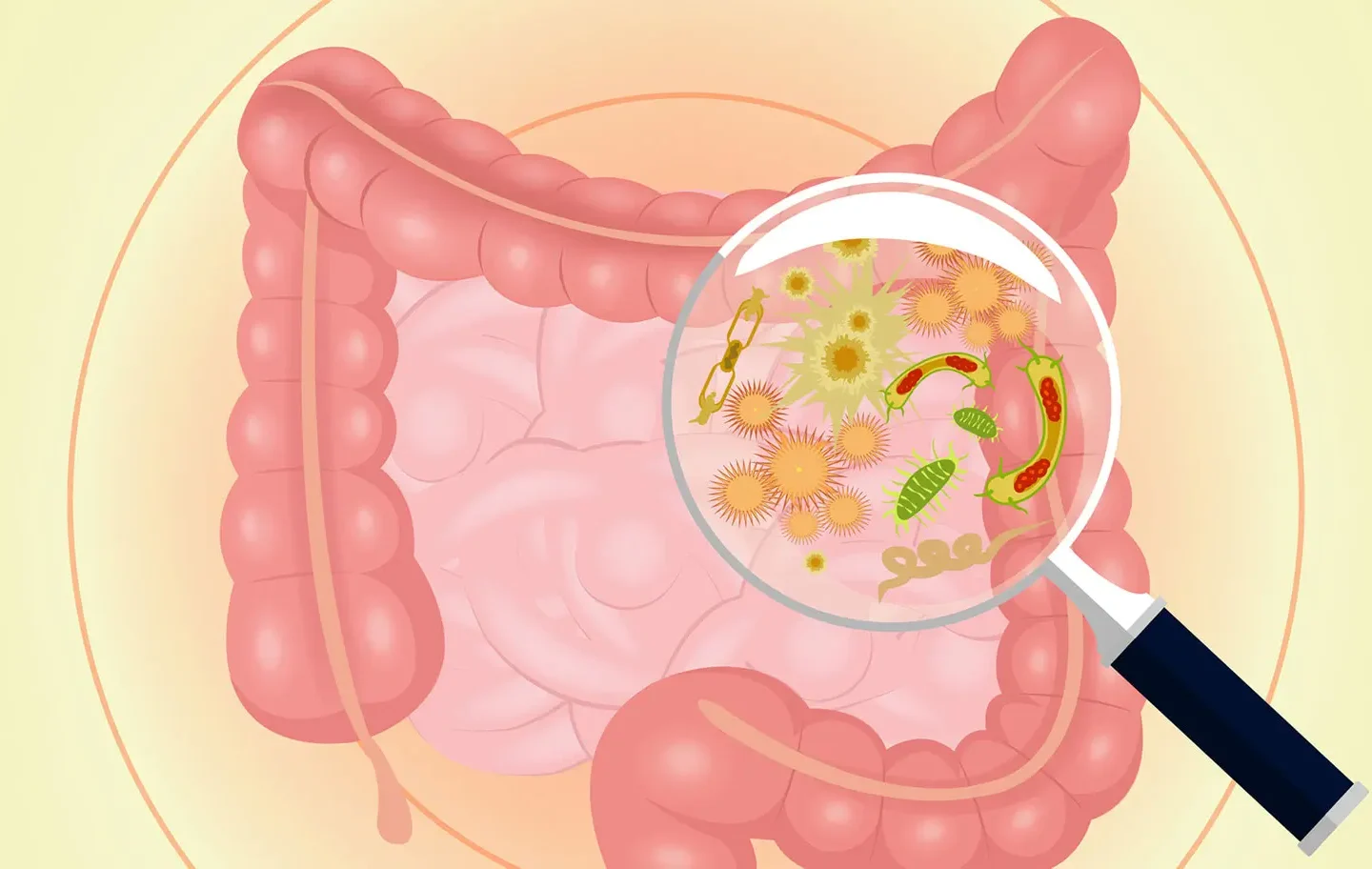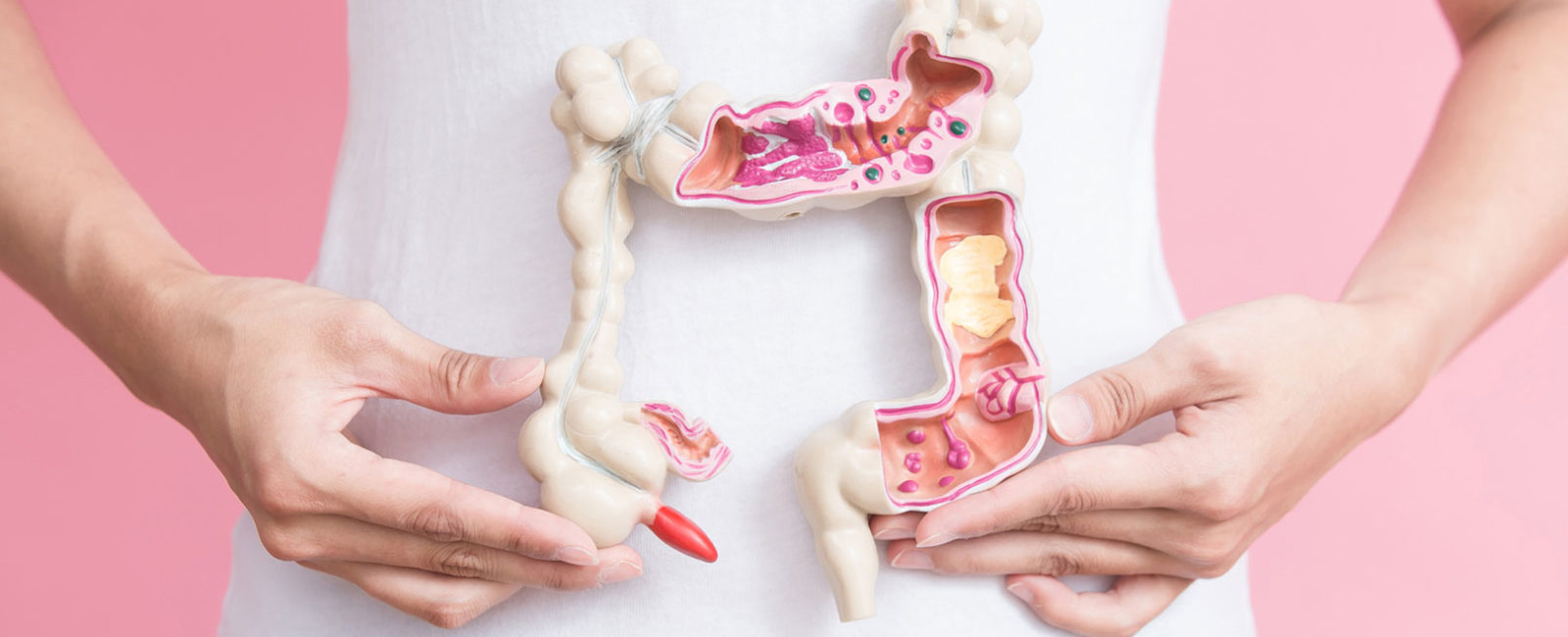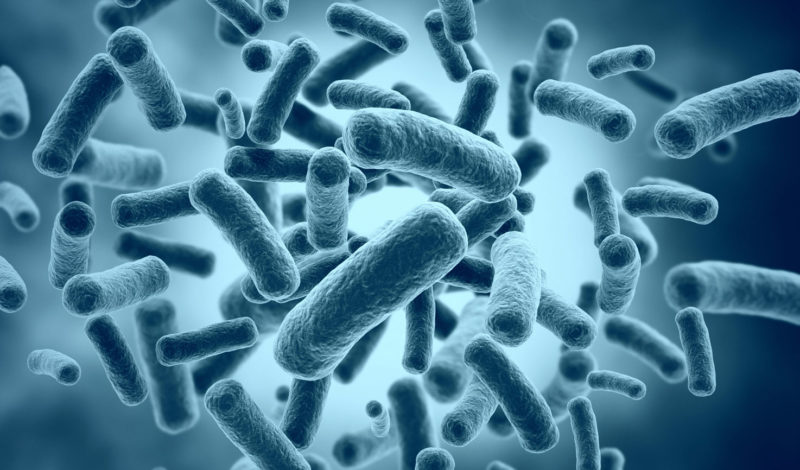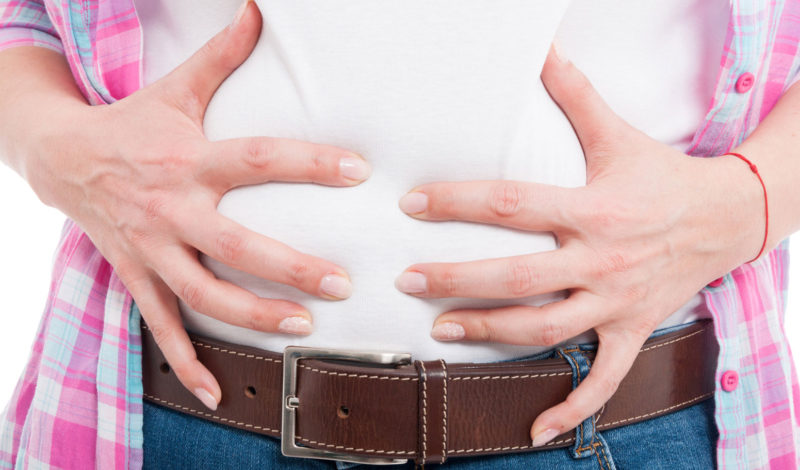Your intestine is home to a multitude of bacteria – in total, your intestinal microbiome (the technical term for your [...]

Bacteria of the intestinal flora: Which microbes populate our intestines?
Many people associate bacteria with contamination and the risk of infection. In our intestines, however, the microbes are quite welcome: several thousand species of bacteria are responsible for a smooth digestion and an intact intestinal barrier. They influence our immune system and possibly even our weight.
The microbiome: The totality of all bacteria in the intestine
Research often refers to intestinal bacteria as microbiomes – scientists have paid particular attention to them in recent years. You can imagine it as an ecosystem. In the meantime even connections between the intestinal flora bacteria and psychological or neurological illnesses are examined. Which types of bacteria are present in the intestine do not seem to differ from person to person – but how many bacteria of a certain species are present in the respective microbiome.
Genetic predisposition, individual eating habits and the intake of medication, especially antibiotics, play an important role here. Four central bacterial strains with their respective numerous subgenera and species have been identified by researchers in the human intestinal flora:
- bacteroides
- firmicutes
- actinobacteria
- proteobacteria
Which intestinal flora bacteria are good, which are bad?
Several thousand bacterial species and a total of about 100 trillion bacteria are found in the human intestine – there is no larger bacterial population anywhere else on earth. Even a healthy intestinal flora has disease-causing (pathogenic) bacterial cultures – this is no cause for concern. The only important thing is that the useful intestinal bacteria stay in control and keep the harmful ones in check.
Useful bacteria that strengthen the intestinal flora
There are countless bacterial species that have a positive influence on intestinal health. Some of the most important are:
The bacteria that make yoghurt and cheese from milk are numerous in the human and animal intestines. They are responsible for the production of lactic acid and hydrogen peroxide. The environment that is created in the digestive tract serves to combat disease-causing intestinal bacteria.
Bei Säuglingen, die gestillt werden, besteht die Darmflora fast zu 90 Prozent aus Bifidobakterien; auch bei Erwachsenen ist diese nützliche Spezies in großer Zahl zu finden. Sie unterstützt das Immunsystem, indem sie Milchsäure und einige lebenswichtige Enzyme und Vitamine herstellt.
Harmful bacteria in the intestinal flora
Pathogenic intestinal bacteria are also part of the microbiome – but if they gain the upper hand, they can cause inflammation, abdominal pain and diarrhoea. A few are:
They belong to the bacteria genus Firmicutes, which also includes the beneficial lactic acid bacteria. In contrast to lactobacilli, staphylococci can cause great damage. They are often the cause of food poisoning or skin irritations and can even lead to blood poisoning.
This pathogenic bacterial type belongs to the Firmicutes strain and is a typical representative of hospital germs. It can cause severe diarrhoea and intestinal inflammation.
The three types of intestines
Research on intestinal flora bacteria also showed that there are three intestinal types:
Type 1 is dominated by Bacteroides bacteria, and the lowest bacterial diversity can also be found here.
In type 2, prevotella bacteria are most common.
In type 3 – the most common intestinal type – Ruminococcus bacteria predominate.
The analysis of the intestinal type does not only provide information about the respective eating habits – meat eaters, for example, often belong to type 1, while type 2 is more common among vegetarians and vegans. Also the predisposition for certain diseases or overweight seems to be influenced by the dominant bacterial species. For example, some bacterial species are able to split up food more thoroughly than others and thus gain more energy from it. An excess of certain species can therefore have an effect on the metabolism and ensure that energy is available particularly quickly – or that food components are excreted unused.
Ingest bacteria for the intestinal flora from food
The composition of the intestinal flora does not have to remain a secret – the intestinal test INTEST.pro for example, helps to determine this. It can be done easily at home and gives a detailed insight into the state of the intestine. From the test results it can be deduced whether intestinal support is necessary, for example through prebiotic food or probiotic dietary supplements.
Except for the consumption of food or dietary supplements containing bacteria to strengthen the intestinal flora, a diet rich in fibre is recommended. At least 30 grams per day promote the growth of beneficial intestinal flora bacteria and thus ensure the optimum balance in the digestive tract.




